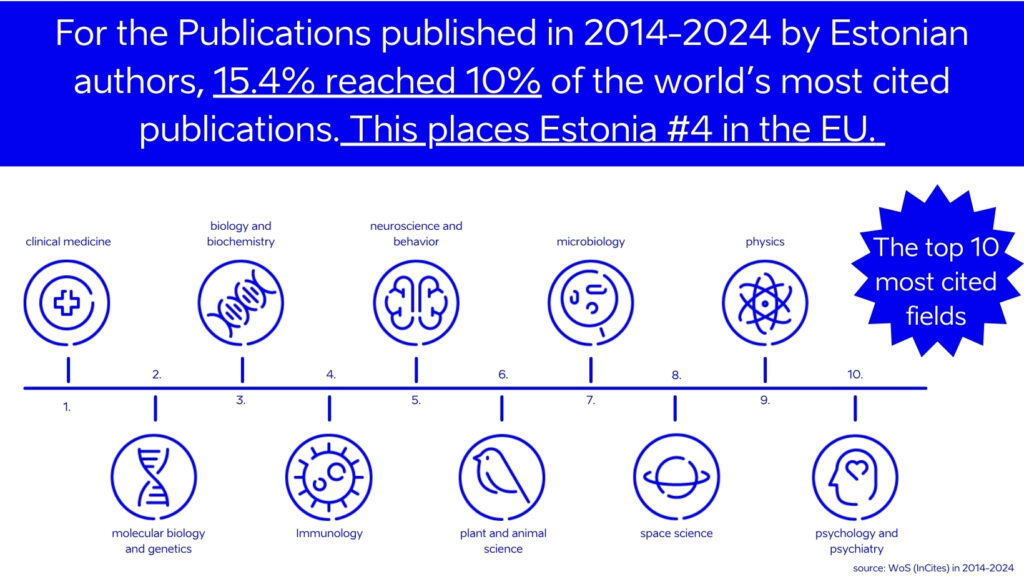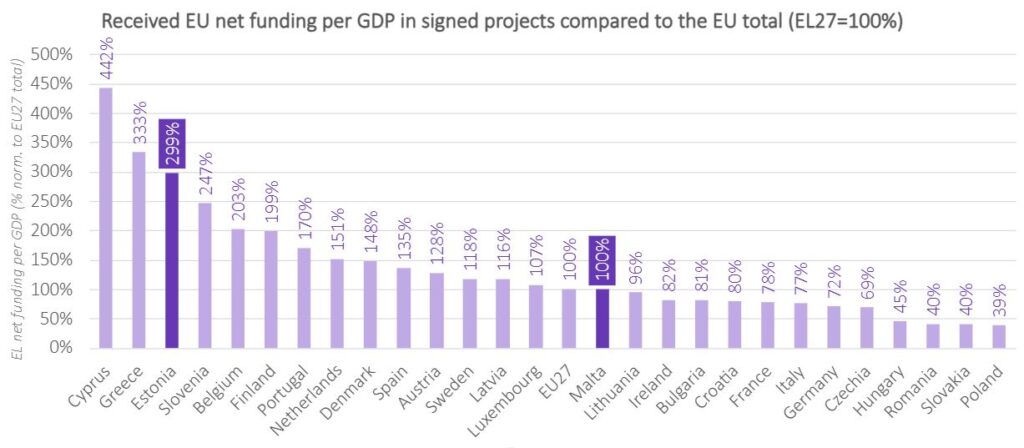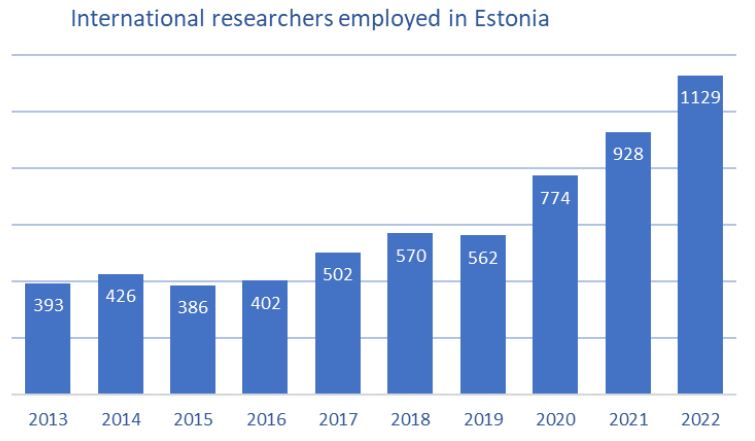In this section, you can find facts and figures, that describe the best of Estonian research fields.
- Estonian research belongs to the upper 50% of the world in all 22 fields of research specified in the Essential Science Indicators (ESI) database.
- The most cited fields (compared to the global average of the field) according to the Web of Science are clinical medicine; molecular biology & genetics; biology & biochemistry; immunology; neuroscience and behavior; plant & animal sciences; microbiology; space science; physics, and psychiatry/psychology.

- For the Publications published in 2014-2024 by Estonian authors, 15.4% reached 10% of the world’s most cited publications. This places Estonia #4 in the EU*. Source: InCites, 2024.
- There are 6 influential researchers from Estonian R&D institutions who are among the world’s top 1% of researchers by citations for their field and year, according to Clarivate Analytics: Ülo Niinemets (Estonian University of Life Sciences), Mohammad Bahram (University of Tartu), Leho Tedersoo (University of Tartu), Elin Org (University of Tartu), Frank Witlox (University of Tartu) and Linda D. Hollebeek (Tallinn University of Technology).

- Research in Estonia is primarily financed based on quality competition. Financing comes mainly from the state budget; but also from companies, foreign funds (mainly the EU’s Framework Programme for Research and Innovation Horizon 2020), and other EU initiatives. The Estonian Research Council (ETAG) is the main body responsible for the funding of R&D, supports researchers’ mobility and external cooperation offering various segments of grants.

- Estonia held a very good position within the EU because of its successful participation in Horizon 2020. If we compare the proportion of the awarded funds to a country’s GDP, Estonia exceeded the European average by 2.8 times. Such success is evidence of Estonian researchers and entrepreneurs’ high level and competitiveness in the European research and innovation market. Since participation in the EU Framework Programme generally requires cooperation, success indicates that our researchers and entrepreneurs are valued partners. With regard to this indicator, Estonia ranks #3 in the European Union. Source: eCORDA, Eurostat and calculations by the Estonian Research Council.

Estonian research has become more international. For example, from 2013 to 2022, the number of foreign researchers in institutional non-profit sectors has grown by 2,9 times (to 18% of researchers) (Source: Statistics Estonia). The share of international PhD students in Estonia has risen to 35% in the 2023/2024 academic year (Source: Haridussilm).
